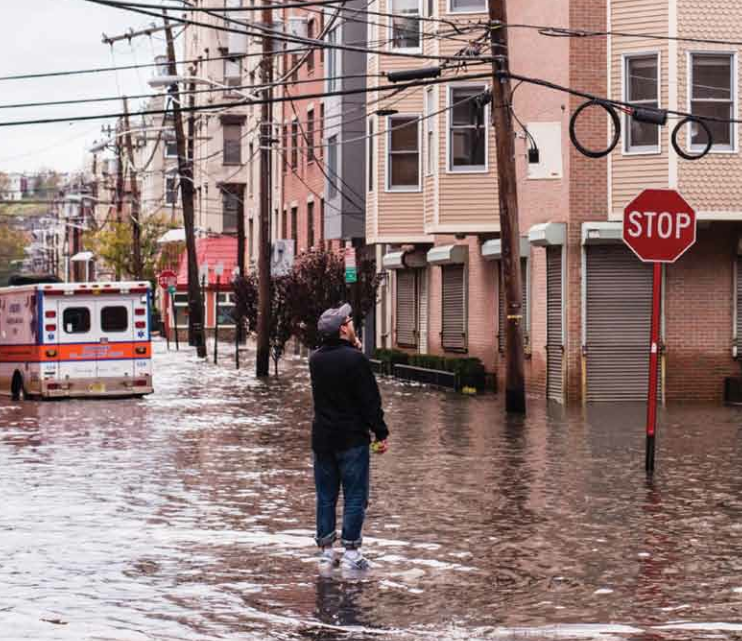Safety & Environment
Superstorm Sandy Tests Northeast Mettle

As Superstorm Sandy grew, so did the warnings that this hurricane could be historic. Once it slammed into the East Coast on Oct. 29, nobody doubted that it would be. Unprecedented surges of seawater inundated New York City’s tunnels, subways and electrical systems.
E.E. Cruz crews began preparing for Hurricane Sandy on the Friday prior to it making landfall. On the Second Avenue Subway project, an E.E. Cruz/Tully joint venture, preparations included removing all trash and debris from lay-down and work areas between 102nd Street and 91st Street. Sandbags were placed and booms were lowered on three cranes and three large drills. Crews nailed down saw horses and lumber and cut slits into fencing screens to allow for air passage. A significant portion of preparations involved removing two Gradalls and three excavators out of the cut-and-cover tunnel. Extra pumps and gas cans were procured as well.
“We spent approximately 320 man-hours on pre-storm activities and an additional 700 man-hours on post-storm activities,” said project manager Richard France.
A comprehensive hurricane preparedness plan was followed, along with some additional preparation that went above and beyond to help minimize damage. Supervisors Joe Flanagan and Fred Fazio essentially stayed overnight at the job site during the worst of the storm.
“We had substantial flooding, but with the additional pumps we were able to minimize the downtime,” said Richard.
After the storm, several traffic lights were down or facing the wrong direction, and local businesses’ awnings were blown into the work zone. Fencing blew over despite added ballasts. Window washing scaffolding from another contractor not associated with the Second Avenue Subway project landed in the work area causing minor damage to another section of fencing—an event prompting one lesson learned for the future.
“You cannot be too prepared,” said Richard. “Next time I will look harder at other potential flying hazards, such as the window washing scaffolding, awnings, and not just our own stuff.”
The project continued to be impacted in a major way even after the storm had dissipated.
“We weren’t able to get deliveries from areas in southern New Jersey,” explained Richard. “Not being able to get gas or fuel was a major headache. Permits for trucking weren’t being issued by the Department of Transportation, and most concrete plants weren’t operating because of flooding or lack of power.
“Most everyone was without power,” continued Richard. “Our house has a generator, so we set up ‘Camp France’ and took in a few neighbors. So did several other people that I spoke with. New Yorkers always take care of their own.”
Sandy’s historic appearance didn’t keep crews down for long.
“When I was trying to get into Manhattan on Tuesday morning, police had barricaded the bridges and tunnels, allowing access to only the fire department, ambulances and police,” Richard said. “I explained, at length, that I should be allowed into the city because I was meeting construction crews to start the Second Avenue cleanup, and ensure that the tunnel wasn’t flooded. The police officer flat out refused to let me cross the bridge. After some exasperation, I said ‘fine, make my day, and send me home. I don’t want to go to work anyway in this mess,’ to which he replied, ‘alright, go ahead.’ I guess that’s called ‘reverse psychology.’’
Richard said that out of 100-plus people on the job, a small skeleton crew showed up Tuesday morning, primarily due to those barricaded bridges and dealing with damage to their or their family’s houses. On Wednesday, however, just three days after this record-setting storm, the Second Avenue Subway project had nearly a full workforce.

